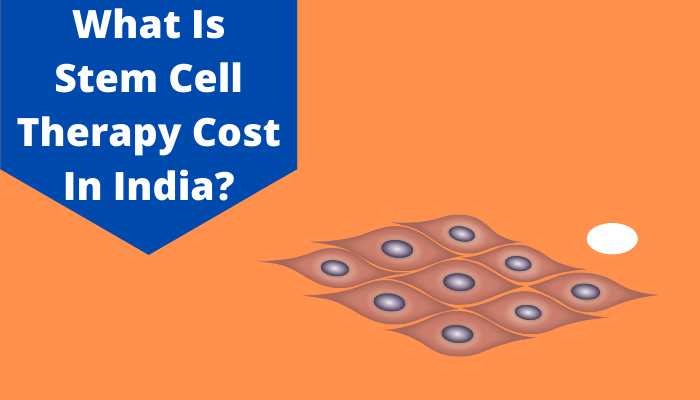5 things to keep in mind while looking for a Health Insurance Top-up Plan
What are Top-up Plans and why are they necessary?
In the insurance industry, health insurance companies generally offer their existing policyholders top-up products that allow them to increase their health coverage far beyond the principal sum assured opted by them.
These top-ups can be bought on an existing plan or as a basic policy at lower premium rates; which is often preferred by most. In the case of a top-up, when a policyholder exhausts the basic financial help provided under the normal plan, he/she can opt for a top-up to get complete protection under serious circumstances.
Top-up plans tend to complement the primary health policy of the insured and shield the buyer from incurring additional expenses. For a simple analogy, consider – you are going on a long drive on a weekend along with your family to the hills. Due to improper road conditions during your journey, you experience a flat tire, in the middle of nowhere, there are no repairing shops anywhere nearby and it is close to sunset. Suddenly, you remember there’s a spare tire you are carrying with you, in the trunk. Top-up plans are just like the spare tires of a vehicle. When the tire goes flat you always have one back-up.
Understanding more about Health Top-up Plans
Deriving from our previous analogy, health top-up plans have a similar role. They are a step-gap to your health insurance plans after you exhaust the sum insured limit. In case a normal health policy covers the bills up to the sum insured; a top-up plan covers costs after a limited threshold specified in the policy is reached.
To set it up, the insurance company will pay up to the insured sum up to the insured limit. The top-up, depending on its eligibility, will kick in only when a certain limited amount, say, Rs.5 lakh has been crossed. It will cover you for the claim amount over and above it.
A top-up for a health policy is just like additional coverage for people who have an existing individual plan or a Mediclaim policy from their employer. It is for reimbursement of the expenses which occur out of a single illness beyond the limit of the existing cover and are applicable to a singular claim.
When does it make sense to buy a Top-up Plan?
Let’s say you already have a cover of Rs.7 lakh. Looking at the rising health-related costs, you know this won’t suffice in case of some major emergency and therefore you want to enhance it another Rs.7 lakh.
In this situation, you can opt to buy altogether a different health policy (which will cost around say, Rs.8,000 a year) or you might as well ask your insurer to upgrade the plan by Rs.7 lakh. In both cases, you have to shell out more than you usually would have. But the top-up can be more economical. For example, if you have to shell out Rs.8000 for a fresh policy, the top-up may perhaps come for half the premium amount.
So as you would realize, a top-up plan makes more sense when you want to increase the cover without paying too much for the same.
Again, it might have a big threshold set, sometimes as high as the sum insured itself. For this scenario, the policy benefit of Rs.7 lakh will only kick-in once you have already incurred hospitalization costs of Rs.7 lakh either with your basic principal health policy or incurred expenses out of your pocket.
Although it is not compulsory to have a health policy to buy a top-up plan, it is necessary to take a top-up policy unless you have reimbursement cover equal to at least the threshold which is set of the top-up plan. In this way, you can take care of your expenses even before the top-up plan kicks in. The same applies even if you have a group health insurance that is offered by your employer. If the employer’s cover has a sum insured of Rs.3 lakh, there’s no need to buy a top-up plan with a threshold of more than Rs.3 lakh.
What are the criteria and clauses pertaining to a Top-up plan? –
Although having a high reducible amount, a top-up plan often covers only a single case of hospitalization. If your hospital bill is more than that of the deductible amount during the specific single hospitalization, only in that scenario the top-up plan is applicable. Let’s say. A person has a top-up plan with a threshold amount of Rs.6 lakh and gets hospitalized twice in a year with hospitalization bills of Rs.3.5 lakh and Rs.3 lakh, respectively; the top-up plan will not be triggered. In addition, there is the possibility of a single illness clause as well as some specific guidelines on what is to be considered as a single illness.
In case of a relapse happening within 45 days of discharge from the hospital, it is then considered as a single illness. However, if the policyholder is hospitalized again for the same illness but after 45 days from discharge, it is considered as a fresh illness.
Points to remember while choosing Health Insurance Top-up Plans
- Medical needs
It becomes essential to check that the benefits offered by the top-up cover are adequate to meet the medical needs of the individual policyholders. It is better to have a cautious and guided review of the family’s medical history and make sure the decision is entirely based on medical needs.
- Deductible limits
All the top-up plans available in the market are inherent with a fixed deductible amount and cannot be scaled as per your sweet will. The deductible amount should be equal or near to the sum insured as per the base principal policy. A top-up is most effective if it is utilized when the basic amount assured is exhausted.
Often a policyholder would get covered for a considerable amount at a much lower cost. And it provides extra cover that they may require with some extra savings on the premium and savings based on the cost of any up-gradation to a new plan. Consider a top-up plan of Rs.6 lakh has a deductible threshold of Rs.2 lakh. Now if a person makes a claim of Rs. 2.5 lakh, then the top-up plan is triggered and the health insurance company pays the excess Rs.50,000 to settle the entire claim.
- Sub Limits
Top-up on basic policyholders should keep in check whether there are any sub-limits associated with the top-up plan. Note that if there are any sub-limits, one should make sure that it is negotiated as low as possible.
- Waiting period
If a policyholder decided to buy the base and the top-up plan from different companies, which is quite normal in first-time policyholders, it becomes necessary to check for any pre-existing disease (PED) having waiting period continuity. It is a safe practice for a person to stick to one insurer. If an individual top-up is bought from the same company as an existing health cover or the one provided by their employer, then, in that case, a number of insurance companies offer continuity in the PED waiting period.
- Income tax benefits
The premiums paid on top-up or (super top-up*) plans are eligible for income tax deductions under Section 80D of the IT Act. If the premium is being paid for a plan that covers self, spouse, and children, a maximum of Rs.25,000, under Section 80D can be claimed as a deduction by the policyholder. A basic claim as a deduction of another Rs.25,000 is available for premium in a plan that covers their parents, and if the parents are above the age of 60 years or more, then a deduction of up to Rs.50,000 can be claimed.
*Super Top-up Plans-
The super top-up plans are similar to top-up plans, except that the top-up plan covers a single claim above the threshold amount, while the super top-up plan covers the total of all hospitalization bills above the threshold amount. In other words, super top-up can even cover multiple hospitalizations of the insured.
In a nutshell –
In case the basic health insurance doesn’t suffice the needs of the policyholders they can opt to go for a top-up health plan for additional coverage.
In case the policyholder wants to refrain from paying higher premiums and get additional coverage they can opt for top-ups since these get lower rates when compared to buying a new basic policy offering similar coverage and like benefits. It won’t just save you money and you won’t waste your time trying to find new plans and completing the same formalities all over again.
FAQs: Health Insurance Top-up Plans
What features do the Top-up plans provide for me and my family?
1. In a family, children can also be included if the parents are already covered.
2. In some top-up policies, there are additional family discounts offered by a few companies.
3. For a claim-free year, a cumulative bonus is offered on the total sum insured.
4. Hassle-free inclusion since no pre-medical tests is required up to a certain age.
What are the coverage and additional benefits of a top-up plan over an existing basic health plan?
The following are some of the key items covered under a top-up plan
1. The cost incurred on in-patient hospitalization.
2. Pre/post-hospitalization expenses of 60 and 90 days respectively.
3. There’s an option for day-care procedures that don’t need admission to a hospital.
4. Some plan also offers cover for the organ donation cost.
How flexible is it if I opt for a Top Plan?
1. A financial backup is created, even if policyholders existing health policy gets terminated.
2. A top-up is an alternative to upgrading your current plan coverage without getting into the extra costs of a new plan.
3. The Top-Up Plan can be purchased even if you do not have a basic medical policy.
4. Conversion of top-up into a basic health plan is simple and it is also hassle-free.




























